Dunkirk, France
Started in the 17th century as a feast to honour local fishermen, Dunkirk’s is now one of the biggest – and longest-lasting – parties in France; kicking off in January with weekly grand balls. Festivities reach a peak the three days before Ash Wednesday known as Les Trois Joyeuses with costumed bands and parades and, on the Sunday, a unique local twist involving 450kg of herring. So avoid the town hall if you don’t want to get pelted with fish.
25-27 February, ot-dunkerque.fr
Piedmont, Italy
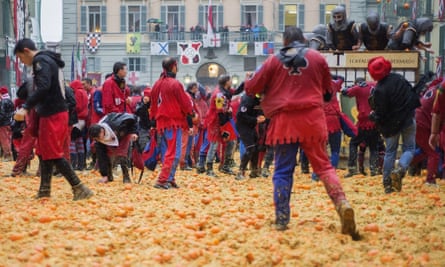
While Spain has its tomato-throwing, Italy’s biggest food fight takes place in the town of Ivrea, and involves oranges – lots of them. They are the weapon of choice in a re-enactment of a battle that took place between locals and Napoleonic troops in the early 19th century. The citrussy tussle is followed by a parade of floats and music groups.
Orange throwing 2pm, 26 February; other festivities take place on Sundays, Mondays and Tuesdays throughout February, storicocarnevaleivrea.it
Basel, Switzerland
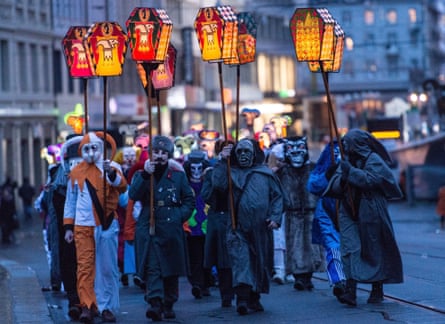
Perhaps surprising for a country with a reputation for being orderly, but Switzerland loves a carnival – and Basel is it biggest, attracting around 500,000 visitors a year. Mind you, the festivities kick-off early – and promptly – at 4am with the Morgenstreich (morning stroke) when all lights are switched off and about 200 ensembles start making their way through the city centre, lit by hand-painted lanterns. It’s followed by three-days of marching bands, and costumed paraders throwing sweets and confetti at the crowds.
6-9 March, for more information visit lifeinbasel.com
Eastern Bohemia, Czech Republic

Shrovetide is celebrated all over the Czech Republic but only the door-to-door processions in the Hlinecko area feature in Unesco’s Intangible Heritage list. Banned first by Catholics and then by the socialist government, the tradition of visiting each house accompanied by a brass band and ritual dancing somehow survived. The finale is the burning of the Mare effigy to symbolise the end of winter.
25-28 February, hlinsko.cz
Cádiz, Spain

It may be less on the radar than the carnivals in Rio, Trinidad and Tenerife, but Cádiz’s annual extravaganza is still epic, with tens of thousands filling the streets where wandering groups of musicians entertain the crowds with satirical songs, and performers, costumed paraders and children’s entertainers keep spirits high. It all culminates in the burial of a … sardine.
23 Febraury- 5 March, cadizturismo.com
Rumšiškės, Lithuania

Carnival is one of the most important dates in the Lithuanian calendar and is celebrated all over the country. There are masked parades, staged fights, and the burning of a giant witch-like character (Morė), which symbolises the end of winter. The biggest celebration takes place at the national folk museum in Rumšiškės, near Kaunas, when people from 20 folk groups gather for a mask contest, a craft and food fair and, of course, plenty of pancakes.
26 February, lithuania.travel
Acireale, Sicily
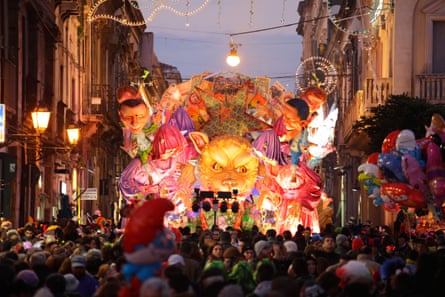
The baroque, coastal city of Acireale, just north of Catania, hosts the most beautiful and popular carnival on the island, featuring elaborate papier-mache floats draped with flowers and carpets of confetti. Crowds follow masked and costumed dancers and attend many concerts. Such is its popularity they do it all again in the first week of August.
18,19,23-28 February, carnevaleacireale.info
La Palma, Canary Islands
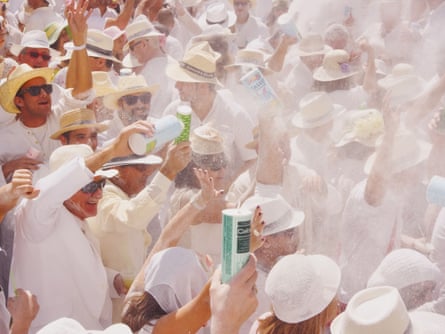
It’s not called the White Party for nothing. On the Monday before Shrove Tuesday, people dressed in white dance through the streets of Santa Cruz to Latin American music before getting showered in talcum powder. Officially known as the Fiesta de Los Indianos, the party celebrates those who emigrated from the island – often to the Caribbean and South America – and returned having made their fortune, and is part of the island’s week-long carnival festivities.
24 Feb-5 March, santacruzdelapalma.es
Bavaria, Germany
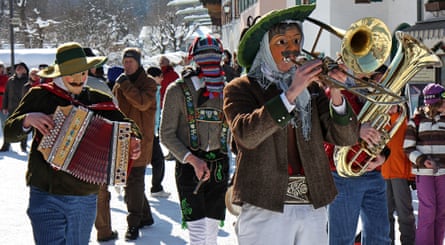
In Germany the “fifth season” (or carnival season) is declared open at 11 minutes past 11am on the 11th day of the 11th month of the year. The frivolities are then suspended for Advent and Christmas before picking up again from 6 January, and “crazy days” in the lead up to Ash Wednesday. The biggest party is in Cologne with parades from the Thursday (women’s carnival day) until Shrove Tuesday. But karneval is celebrated all over the country and is particularly picturesque in Bavaria where “nonsense Thursday” (a week before Maundy Thursday) sees paraders dressed in lederhosen, green hats and wooden masks, and chasing winter away by ringing cow bells. The best known of these takes place in the Alpine villages of the Alpenwelt Karwendel region, including Mittenwald in the foothills of the Alps.
Binche, Belgium
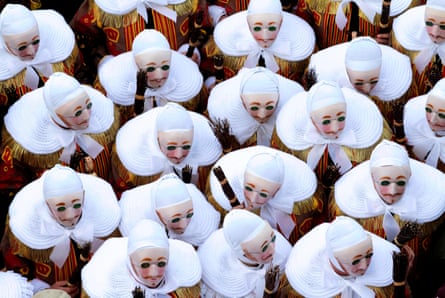

Comments (…)
Sign in or create your Guardian account to join the discussion